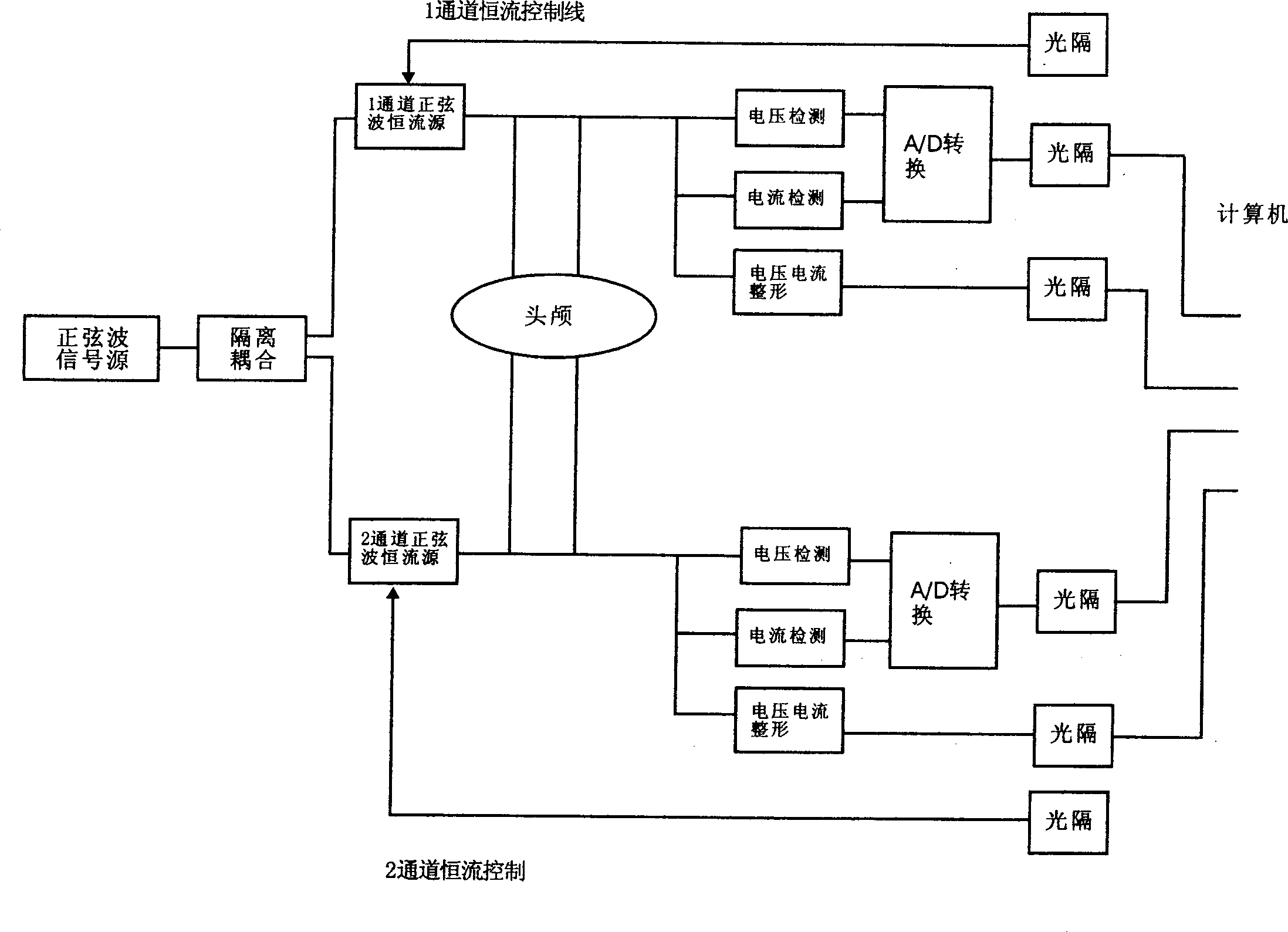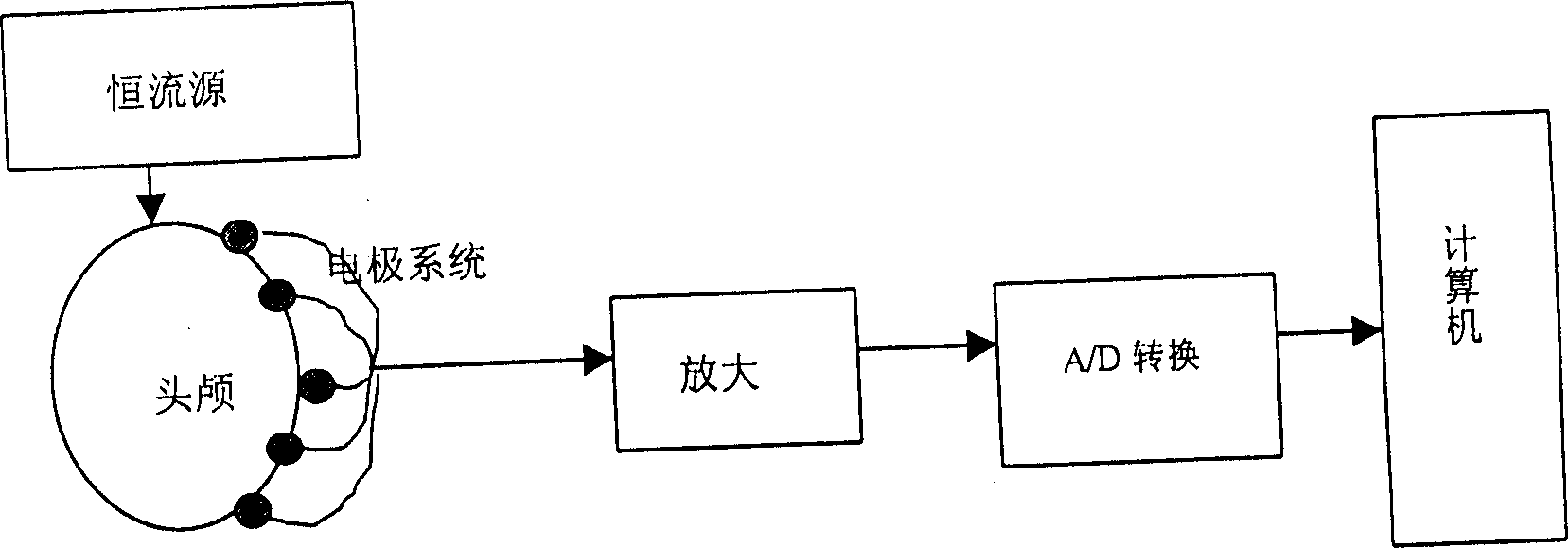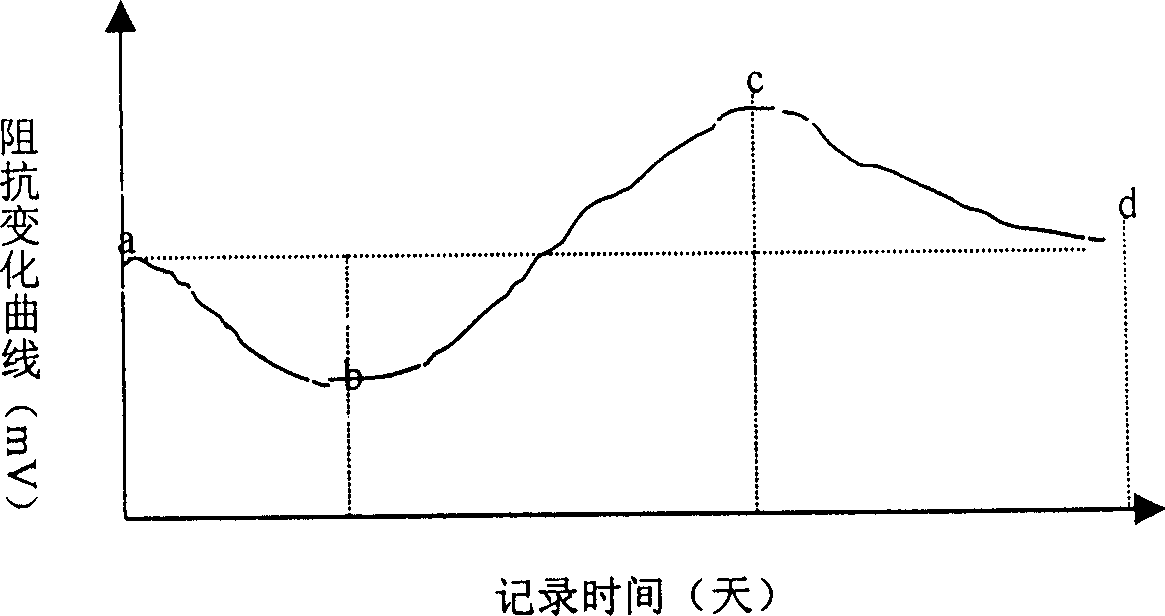Method for non-invasive clinical monitoring intracranial edema
A clinical monitoring and brain technology, applied in diagnostic recording/measurement, medical science, sensors, etc., can solve the problem of blindness in treatment, lack of data on the evolution of edema and hematoma, and inability to dynamically observe the changes of patients detached from intracerebral hematoma in real time, etc. question
- Summary
- Abstract
- Description
- Claims
- Application Information
AI Technical Summary
Problems solved by technology
Method used
Image
Examples
example 1
[0016] Example 1: Using the present invention, two pairs of electrodes are applied to add current from the front and back symmetrical points of the skull surface to form a current field, and the value of potential or impedance is recorded, and intracranial hematoma and edema are inferred from the value of potential or impedance.
[0017] Connection method: 16 pairs of electrodes can be arranged in an orderly manner on the surface of the skull.
[0018] Measuring principles such as figure 2 So not.
[0019] For measurement results, see image 3 , The left side first bleeds to form a hematoma, and then edema appears around the hematoma. The right side is normal. The figure shows the contrast curve of impedance change on the left and right sides.
[0020] Conclusion 1: The appearance of hematoma is manifested by the decrease of impedance on the bleeding side. Section ab in the figure.
[0021] Conclusion 2: After the bleeding stops, the impedance rises, which means edema o...
PUM
 Login to View More
Login to View More Abstract
Description
Claims
Application Information
 Login to View More
Login to View More - R&D
- Intellectual Property
- Life Sciences
- Materials
- Tech Scout
- Unparalleled Data Quality
- Higher Quality Content
- 60% Fewer Hallucinations
Browse by: Latest US Patents, China's latest patents, Technical Efficacy Thesaurus, Application Domain, Technology Topic, Popular Technical Reports.
© 2025 PatSnap. All rights reserved.Legal|Privacy policy|Modern Slavery Act Transparency Statement|Sitemap|About US| Contact US: help@patsnap.com



